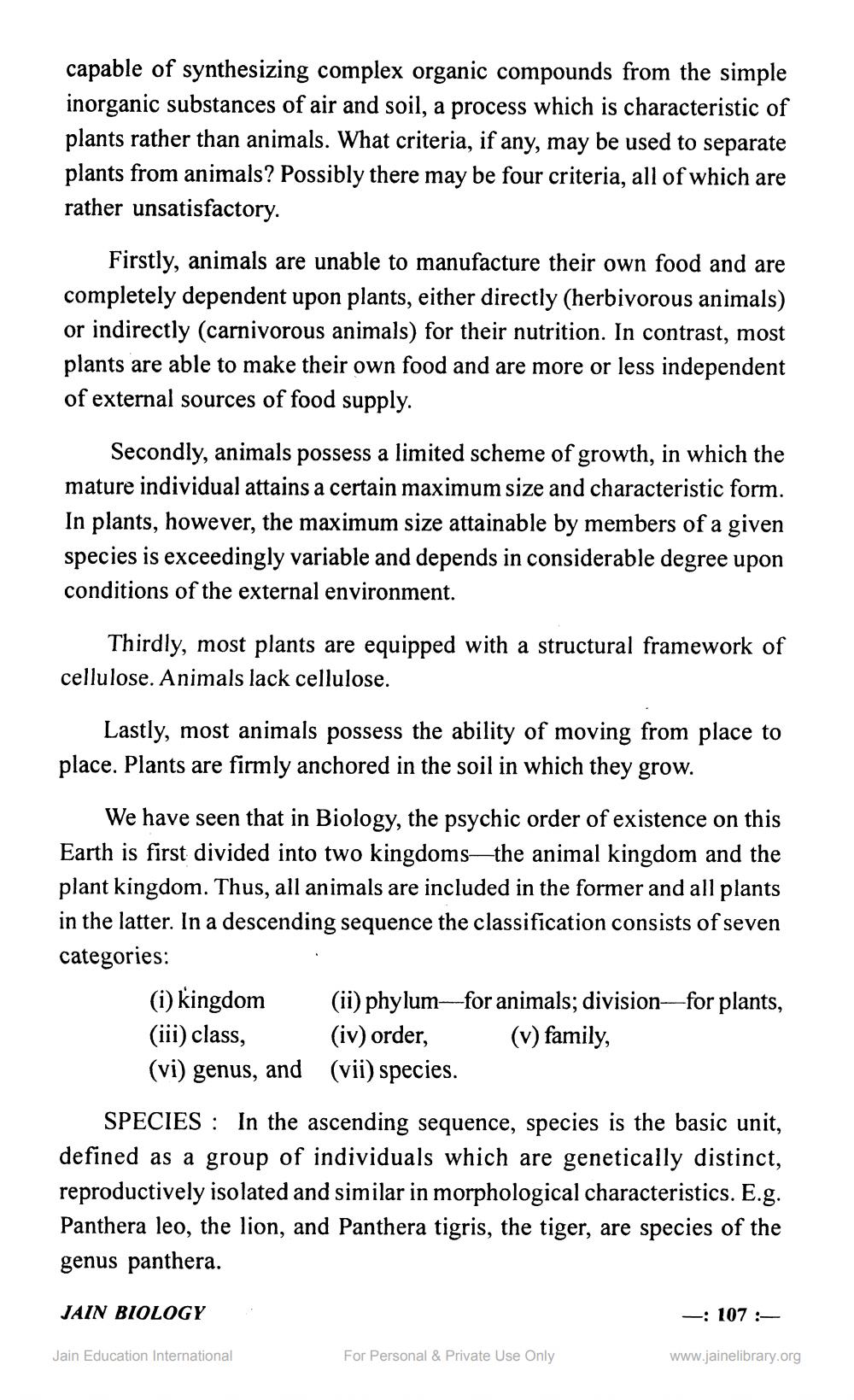________________
capable of synthesizing complex organic compounds from the simple inorganic substances of air and soil, a process which is characteristic of plants rather than animals. What criteria, if any, may be used to separate plants from animals? Possibly there may be four criteria, all of which are rather unsatisfactory.
Firstly, animals are unable to manufacture their own food and are completely dependent upon plants, either directly (herbivorous animals) or indirectly (carnivorous animals) for their nutrition. In contrast, most plants are able to make their own food and are more or less independent of external sources of food supply.
Secondly, animals possess a limited scheme of growth, in which the mature individual attains a certain maximum size and characteristic form. In plants, however, the maximum size attainable by members of a given species is exceedingly variable and depends in considerable degree upon conditions of the external environment.
Thirdly, most plants are equipped with a structural framework of cellulose. Animals lack cellulose.
Lastly, most animals possess the ability of moving from place to place. Plants are firmly anchored in the soil in which they grow.
We have seen that in Biology, the psychic order of existence on this Earth is first divided into two kingdoms—the animal kingdom and the plant kingdom. Thus, all animals are included in the former and all plants in the latter. In a descending sequence the classification consists of seven categories:
(i) kingdom (ii) phylum-for animals; division for plants, (iii) class, (iv) order, (v) family,
(vi) genus, and (vii) species. SPECIES : In the ascending sequence, species is the basic unit, defined as a group of individuals which are genetically distinct, reproductively isolated and similar in morphological characteristics. E.g. Panthera leo, the lion, and Panthera tigris, the tiger, are species of the genus panthera.
JAIN BIOLOGY
—
107 :
Jain Education International
For Personal & Private Use Only
www.jainelibrary.org




